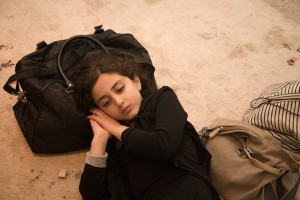Outmigration was a common topic in daily conversations in northeast China, where I did my fieldwork from 2004 to 2008. In discussion, though, there was no generic concept equivalent to ‘migrant’ or ‘out-migrant’. People talked about specific individuals only (“Zhang in Singapore working as a shop assistant”). The closest expression to ‘(out-)migrant’ was ‘those who have gone abroad’. However, the phrase was seldom used and did not mean much more than such purely descriptive terms as ‘those who are lucky’ or ‘those who are tall’. In contrast, the expression ‘those who wait to go abroad’ was often heard. It referred to a category of people who share certain characteristics. For instance, people would say “those who want to go abroad are ambitious” or “I don’t want to do business with those who wait to go abroad”. ‘Those who wait to go abroad’ are ‘would-be migrants’ who were exploring possibilities of outmigration actively to the extent that their daily lives were significantly changed.
As I have argued elsewhere (Xiang 2012; 2014), the subject of ‘migrant’ is to a great extent an invention by modern researchers and regulators created in order to understand migration from the perspective of nation-states, and particularly from the migrant-receiving countries’ point of view. Only in the twentieth century did nation-states shift their regulatory gaze from the assemblages of activities that made the journey of migration possible to the single individual – the ‘migrant’.
In contrast to the migrant as a policy subject, the would-be migrant is a figure in daily life. Would-be migrants are very busy. They have to navigate “possibilities and constraints, procedures and forms, brokers and payments, waiting time, training or legal regulations” (Belanger and Wang 2013: 49). Their activities are much more complex and consequential in shaping the migration project than the action of crossing borders is. Finally, the prolonged waiting and the high cost involved has significant impacts on the would-bes’ family life and employment prospects. Would-be migrants are the central link between transnational migration and local social changes, probably more so than both migrants and the left-behind.
Aspirations of migration
Would-be migrants are not aspiring migrants. Aspiring migrants started with an aspiration about migration as “ideal-type projects” (Carling 2002: 17), which aspiration was then either fulfilled or frustrated. However, once we unpack ‘aspiration’ ethnographically, what appeared to be desire for migration turns out to be many different things, sometimes completely unrelated to migration. Would-be migrants are not future migrants or migrants to be (c.f. Belanger and Wang 2013). Would-be migrants are not defined by their relationships to the imagined future migration, but are defined by their life histories and current living conditions.
Instead of treating ‘migrant’ as the primary category and the ‘would-be’ as derivative, it may be more accurate to see migrants as contingent outgrowth of would-be migrants. How would-be migrants became actual migrants was, in my field-work, largely a matter of luck, but what would-be migrants do has significant impact on their later experiences as migrants.
How a person becomes a would-be migrant is perhaps more important than how a would-be migrant becomes a migrant. The would-be migrant is a figure of becoming, but is fundamentally a condition of being. Becoming is not a predetermined trajectory – many would-be migrants do not become migrants; however, becoming is not a necessarily fluid, amorphous, and contingent process (c.f. Biehl and Locke 2010). The would-be migrants I spoke to in my field work, believed in the future, at the same time they knew all too well that their potential was constrained and that their ability circumscribed. “If we had stable jobs in big companies, who would want to go overseas?” would-be migrants often asked. The would-be migrant thus provides a powerful lens for critiquing the being through people’s strategies of becoming. In doing so it may help us overcome deterministic structural approach (fixating on the being and forgetting about the becoming) and the excessive emphasis on individual agency.
References
Belanger, Daniele and Hong-zen Wang. 2013. Becoming a migrant: Vietnamese emigration to East Asia. Pacific Affairs 86(1), 31–50.
Biehl, Joao and Locke, Peter. 2010. Deleuze and the anthropology of becoming. Current Anthropology 51(3), 342–343.
Carling, Jørgen. 2002. Migration in the age of involuntary immobility: Theoretical reflections and Cape Verdean experiences. Journal of Ethnic and Migration Studies 28(1): 5–42.
Xiang, Biao. 2012. Are there such people as “migrants”? COMPAS blog 4 July 2012.
XIANG Biao (2014). The Would-Be Migrant: Post-Socialist Primitive Accumulation, Potential Transnational Mobility, and the Displacement of the Present in Northeast China. TRaNS: Trans -Regional and -National Studies of Southeast Asia, 2 (2): 183-199

